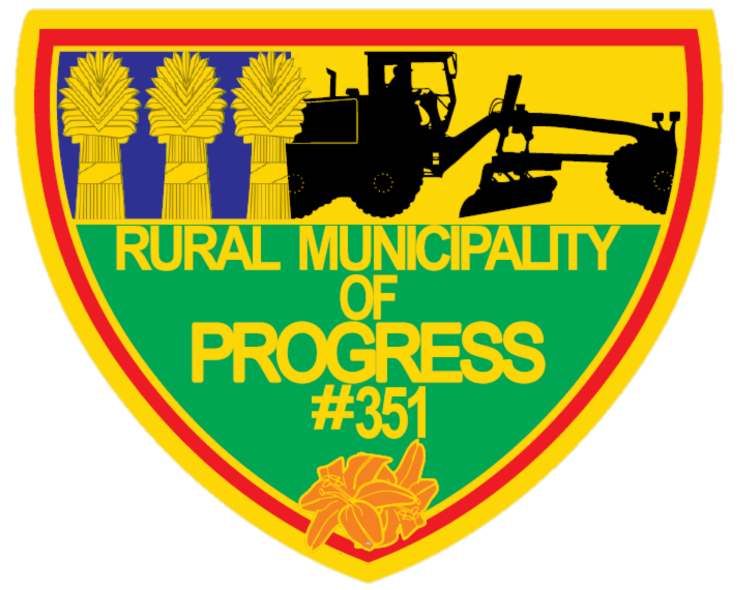RURAL ASSESSMENTS & TAX EXEMPTIONS
*as per Residential Tax Exemptions in Rural Municipalities (Fact Sheet) provided by the Saskatchewan Ministry of Government Relations. This is not a substitute for legislation. For questions, please contact the Advisory Services Inquiry Line at 306-787-2680 or by email at muninfo@gov.sk.ca.If you believe that your residence qualifies for an exemption please download or print this affadavit and return it to the RM of Progress office when completed.
Section 293 of The Municipalities Act
The Municipalities Act (Act) provides that certain dwellings (residences) in a rural municipality (RM) are exempt from taxation. A residence may be either fully exempt, partially exempt or receive no exemption at all based on the criteria set out in section 293 of the Act. For example, unoccupied residences situated on agricultural land are fully exempt from taxation. When it comes to occupied residences, an exemption may apply based on its location in the RM and any agricultural land owned or leased by the occupant. For the purpose of this document, we will focus on the legislation the assessor must consider as it applies to occupied residences.
Location of Residences
Occupied residences located in hamlets, organized hamlets (OH), or special service areas (SSA) are not eligible to receive a tax exemption. To confirm whether or not a residence is in an OH or a SSA, the assessor must consult the Minister’s Order that established the boundaries of the OH or SSA. To confirm whether or not a residence is in a hamlet (sometimes referred to as an unorganized hamlet, a development or a subdivision), the boundaries may be established by a Minister’s Order. However, in most cases the assessor must apply the definition of hamlet found in the Act if a Minister’s Order does not exist. According to section 2, an area is considered a hamlet if:
- The area in question is separated into at least 10 lots, blocks or parcels where the majority (on average) are less than one-acre in size; and
- There are at least five (5) occupied residences on the individual parcels.
If it is determined that an occupied residence is not located in a hamlet, OH or SSA, then it meets the initial criteria to receive a tax exemption.
Definition of Land
The assessor must next consider the agricultural land that is owned or leased by the occupant of that residence. Land, as it is referred to in section 293, can mean any of the following when considering the majority of the surface area of a property:
- The predominant potential use is for cultivation, range land or pasture land;
- It is not developed for any use and has been left in its native state;
- It is not developed for any use and is being returned permanently to its native state or cannot be used for agricultural purposes; or
- It is being used for any other agricultural purpose.
A key indicator that the land meets the definition above is that it is appropriately classed and assessed as agricultural land. It is important that the assessor accurately determines the property’s classification(s) shown on the assessment roll, according to The Municipalities Regulations. How a property is zoned in the municipality’s zoning bylaw has no bearing on whether a tax exemption is applicable.
Calculating the Exemption
Once the assessor has established that a residence may qualify for an exemption due to its location, they must determine the amount of the exemption applicable. The amount of the exemption is equal to the total taxable assessment of agricultural land owned or leased by the person occupying the residence. The agricultural land must be in the RM (or an adjoining RM) and it must be owned or leased by:
- The occupant of the residence, their spouse or both of them;
- A partnership of which the occupant of the residence is a partner; or
- A corporation of which the occupant of the residence is a shareholder.
In the case of agricultural land owned by a partnership or a corporation, the amount of the assessment to use for an exemption bears the same relationship the person has within the partnership or corporation. For example, a person who has a 50% share in a corporation that owns one quarter of land with a taxable assessment of $80,000 would be entitled to an exemption of $40,000 for their own residence.
The following conditions also apply:
- The amount of an exemption cannot be more than the taxable assessment of the residence;
- Once agricultural land has been used to calculate an exemption, it cannot be used again;
- Persons who own or lease more than one residence in the same RM are only entitled to receive an exemption on the residence with the higher assessment; and
- Those who lease agricultural land must supply a copy of their lease agreement to the assessor on or before March 31st in any year in order to be able to receive an exemption. Written notice must accompany the lease signed by the land owner, stating the owner agrees the lessee is to receive the exemption.
Residential tax exemptions are indicated on the RM’s assessment roll each year and can be viewed by the public when the assessment roll is open. Although it is the responsibility of the assessor to apply tax exemptions according to the Act, the assessed owner is equally responsible for reviewing their property assessment each year to ensure their exemption entitlement is accurate.
